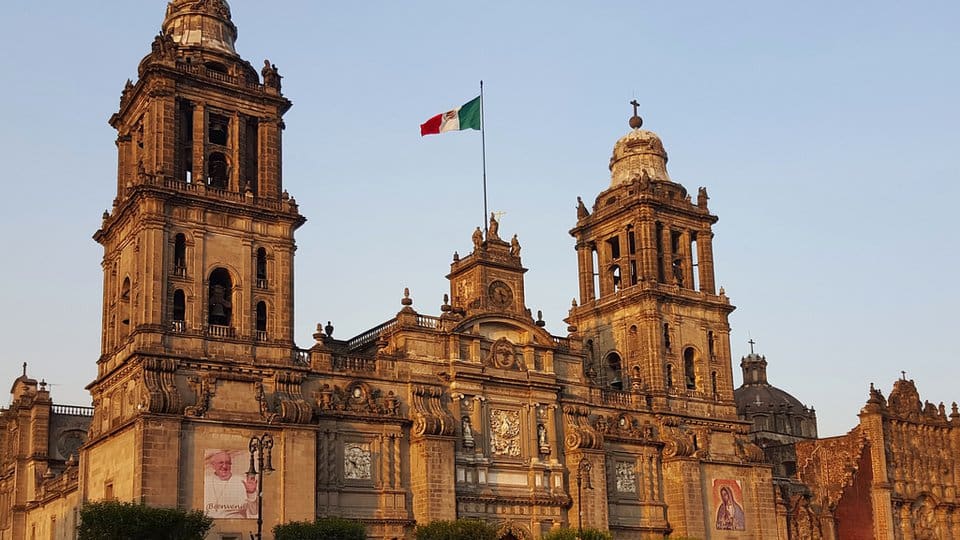Luxury goods retail sales in Mexico grew an impressive 9% to reach MXN 65 billion (US$3.2 billion) in 2016 making it the largest luxury goods market in the Latin American region and bucking the overall emerging market trend of slower growth that we have witnessed over the past few years.

Luxury goods retail sales in Mexico grew an impressive 9% to reach MXN 65 billion (US$3.2 billion) in 2016 making it the largest luxury goods market in the Latin American region and bucking the overall emerging market trend of slower growth that we have witnessed over the past few years.
This growth is thanks, in large part, to a stable economic performance despite global uncertainty and an expanding middle-class consumer base. Below, Euromonitor International highlights some key trends that will likely shape the industry in 2017, including the impact of the strong US dollar, mobile retailing, and continued company activity in the form of mergers, acquisitions, and expansions.
Luxury goods performance weighs heavily on US economy
Given Mexico’s close economic ties with the USA, Mexico will be one of the most impacted countries from the Trump administration. This in turn will have a profound impact on what was Mexico’s thriving luxury good market.
Mexico’s economy, and with it its luxury goods market, is heavily reliant on the success of the US economy to drive exports progression and remittance inflows. Donald Trump’s surprising victory in the US elections pushed the Mexican peso to historic lows, summoning dangers in store for Mexico’s luxury goods market, given the newly elected President’s proposed protectionist measures.
Although, the viability of his plans seem very uncertain, the start of Trump’s administration haunts Mexico’s luxury goods market given the nation’s strong link to the US economy. Trump’s victory is expected to deteriorate Mexico’s business as well as consumer sentiments, external balances and trade ties with the USA. This is further expected to reduce Mexico’s real GDP growth forecast from 2.7% (according to the Pre-Trump Scenario in Euromonitor’s Macro Model) to 1.6% in 2017.
Impact of the strong US dollar
Largely as a result of international macroeconomic factors, the value of the Mexican peso relative to the US dollar declined by 42% between 2013 and the end of 2016. While the costs of imported luxury goods products have somewhat increased, the value of remittances has also climbed – 26% in current local currency terms in the first 10 months of 2016 compared to 2015, according to the Banco de México. The exchange rate has also had positive implications for Mexico’s tourism market, and those indirectly benefited by it.
In 2015 and 2016, many luxury retailers tried to avoid passing the full costs onto consumers. With the dollar projected to remain strong and inflation expected to increase, many retailers may be unable to continue this strategy. While discretionary purchases such as affordable luxury goods will likely show the biggest impact from reduced spending power, there may be spillover effects on other categories. There are concerns that some lower income luxury consumers may start to trade down in the short to medium term.
Mexico leads the region with mobile retailing
Despite the fact that overall Mexico lags other Latin American countries in terms of total internet retailing, with just 2.5% of all sales being done via the internet in 2016, Mexico leads the region in terms of luxury goods spending online by a large margin but also leads in terms of the prevalence of mobile internet retailing.
In 2016, approximately 24% of all internet retailing sales in the country were carried out via smartphones or tablets, compared to 12% for the region overall. Part of the success of mobile is attributable to access: the penetration rate of smartphones in Mexico in 2016 was 133%, meaning there were more smartphones than households. The arrival of Amazon Fashion in July 2016 further shook up the arena of digital commerce and led players to strengthen their positions in the Omnichanel.
Local retailers in expansion mode
Attracted by the expanding aspirational middle-class, which experienced significant growth over the last 15 years, in recent years a number of international fashion players aggressively entered Mexico’s retail environment, driven by the rocketing expansion of shopping centres in major urban areas. 2016 was indeed a year full of company activity, as domestic retailers sought to take advantage of economic stability in Mexico to grow their footprint and entrench their strategies: Luxury department store Liverpool acquired all Suburbia locations, expanding to a new consumer group, as well as Chilean department store Ripley, expanding to a new market.
Liverpool has established itself as a popular partner for high-end international brands seeking to enter Mexico, and the move gives Liverpool increased negotiating power. Moving forward 2017 will likely bring even more mergers, acquisitions and expansion activity.
Trump’s administration could cause large decline in Mexico’s remittance inflows and exports
Mexico’s economic ties with the USA have amplified considerably since NAFTA took effect in 1994, eradicating most tariffs on goods traded between the USA, Canada and Mexico. Hence, the USA became the Latin American country’s largest trade as well as investment partner. By 2015, 81.0% of Mexican goods were exported to the USA. Elimination of NAFTA will have far reaching consequences for the Mexican economy, via high export costs, reduction of US investments and potential capital flight induced by uncertainty.
Furthermore, in 2015, Mexico was the fourth largest recipient of remittance inflows in the world, accounting for 2.2% of its GDP. These inflows are predominantly from the USA and play a major role in increasing household consumption and reducing poverty. Trump’s anti-immigration policies and his plans of restricting migrant’s remittances will certainly affect Mexican household income and with it their luxury goods expenditure.










